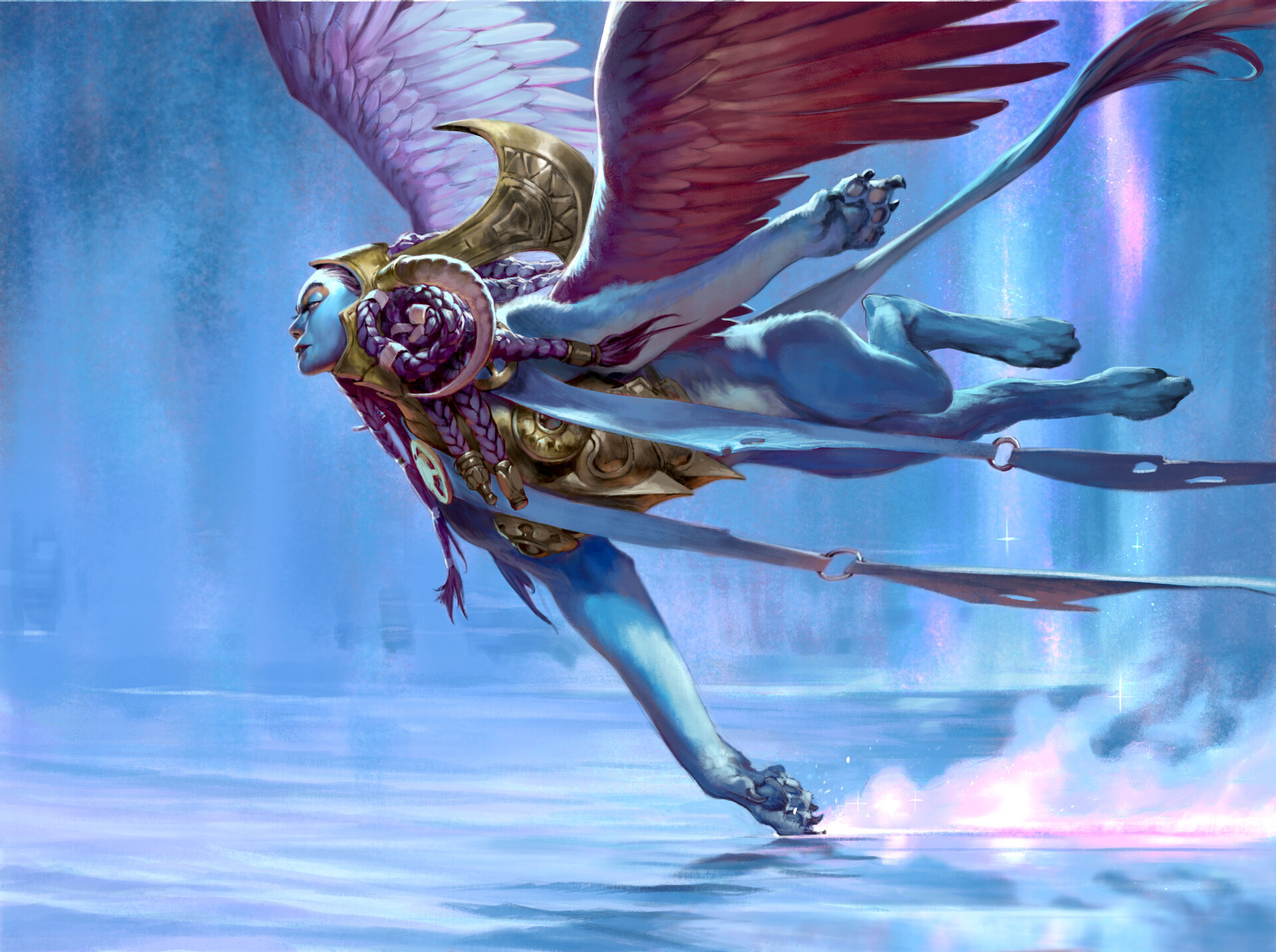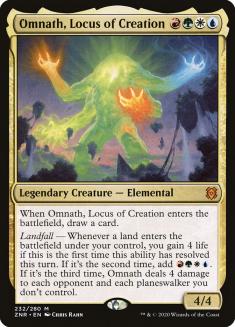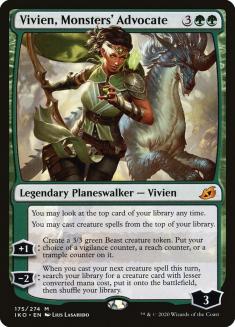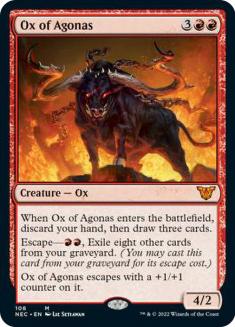2020 was a highly unusual year for everybody, and Magic players are no exception — our entire hobby is based around traveling to events and all of a sudden it all completely stopped. In spite of that, there were many great things that happened for me in 2020, so I thought I would take one article to go over what happened in my year, the events I played, my deck choices and preparation for each event, how things worked out, etc. This will be a little more personal of an article than I usually write (and longer!), but I will still try to include strategy-related bits whenever I can, and hopefully by the end of it you can get a better glimpse of how I approach things regarding both life and tournament Magic.
Around the time the 2019 season was coming to an end, I was fighting for my MPL life. I wasn’t necessarily in a bad spot, but I needed a reasonable finish in either of the two remaining tournaments or I was in serious danger of being relegated. Only four people from the MPL qualified for Worlds, so it wasn’t really something that was on my mind, as it seemed incredibly far away — so much so that I planned a vacation with my wife without worrying about how they might overlap (and it turned out that they didn’t, but I’d have to come back from Hawaii and stay home for literally one and a half days before flying out again).
Fast forward to the end of the year, and I found myself with a second-place finish at Mythic Championship VI and a Top 8 at Mythic Championship VII, which catapulted me to a spot at Worlds that I really had not seen coming. So, we get to my first two tournaments of the year:
Players Tour Brussels
- Formats: Pioneer and Draft
- The deck I played: Five-Color Niv-Mizzet
- Result: 4th
- The deck I should have played: Lotus Breach
Creatures (13)
Planeswalkers (6)
Lands (24)
Spells (17)

Creatures (15)
Lands (23)
Spells (22)

World Championship XXVI
- Formats: Standard and Draft
- The deck I played: Azorius Control
- Result: 1st
- The deck I should have played: Azorius Control
Creatures (2)
Planeswalkers (6)
Lands (25)
Spells (27)

I group these tournaments together because they happened very close to each other and therefore my preparation was the same for both.
My relationship with the World Championship has always been a bit bizarre. In my mind, the World Championship is the most important tournament in Magic. It was also the most important tournament for me on a personal level, as it was the one title I didn’t have. Yet, the effort I put into preparing for World Championship in the past has not reflected this importance, and I always arrive at these tournaments knowing I could have just done more.
I think part of that is because Worlds always happens at the end of the season, so there’s a lot of burnout for me. I spend an entire year trying to qualify for Worlds, so when it finally comes I’m already spent from all the traveling and all the tournaments that I attended to try to get there, so I just want a break from Magic. Another part is also the feeling that, because it always happens so late in the life cycle of a Standard format, there’s nothing new to find and I’m just going to pick one great Standard deck to play against great Standard players. We have had many World Championships where the story played itself out the same way — half the field chooses one Tier 1 deck, the other half chooses the other Tier 1 deck, and Shota Yasooka plays a three-color control deck that loses to both decks and then beats me anyway. Because of this, it hasn’t felt like I was getting enough mileage out of testing a lot for these tournaments.
For this year’s Worlds, I knew things would have to change. First, the format was actually a new format for a change, so there were legitimate strategies to discover. Second, because I realized that my position was absurd. If I truly wanted to win one of these tournaments (and I did), then I would just have to try my hardest, regardless of how burned out I was or how futile it might end up being. Even if I did end up playing one of two Tier 1 decks, there’s still a lot to be gained in having a good list, good plans, and just being familiar with your deck — deck selection in Magic is a game of small edges these days, and I was giving up my small edge simply because I was lazy.
Because of this, I decided I’d go to the Czech Republic to test with Ondrej and his roommates — Stan Cifka, Ivan Floch and Jan Kotrla (KK). I would stay there for a couple of weeks, we’d do hardcore testing on both Worlds formats (Standard and Limited), I’d play the European Regional Players Tour in Brussels (instead of Phoenix, which would have made more sense geography-wise) and then I’d fly to Hawaii from Prague. It was a nightmare of an itinerary, since instead of doing this…
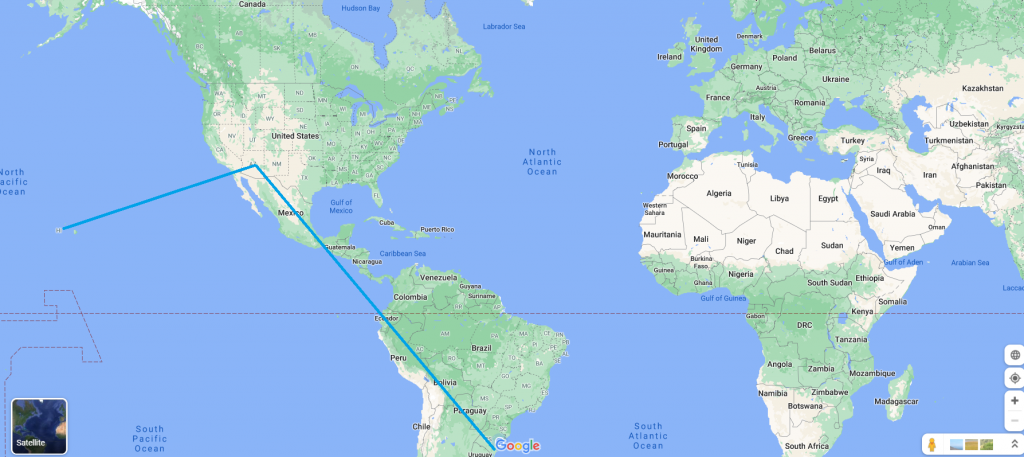
I did this…
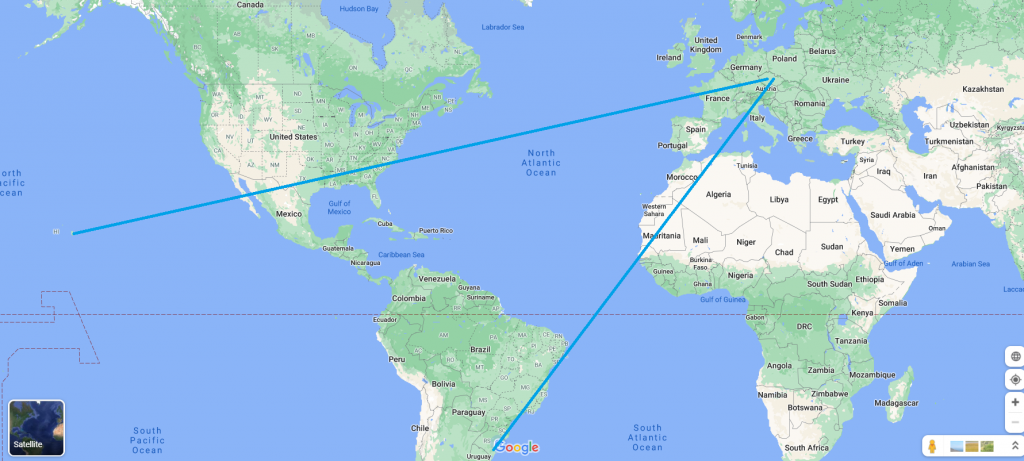
But I felt that, in the end, it would give me the best chance to do well at Worlds and that was what I cared about.
I arrived in the Czech Republic and we got to work as soon as possible. Only Ondrej, Stan, and I were playing Standard — Ivan and KK were working on Pioneer. Luckily, they had enough friends from Prague who were qualified to the Players Tour in Brussels that we could test drafts in person and that was quite useful because it was the one format that overlapped between two tournaments. Worlds would only have one draft, but the weird tournament structure made it so that the three Draft rounds were worth a disproportionate amount.
Standard testing went very well. I think Stan and I “hit it off,” so to speak, and we ended up doing most of the preparation while Ondrej played The Witcher 3. I played a lot of ladder, hitting high Mythic for the first time in my life (it was never something I cared about before) and I felt like I had a really good grasp of the format and the tournament conditions. I had lost games to the Arena interface before and I had serious issues concentrating with the white noise from the headphones, but I got so much practice in those conditions (I had the white noise on at all times while playing) that by the end they became a non-issue.
As far as Standard goes, I tried a lot of different things (the most interesting of which was a Five-Color Enigmatic Incarnation / Niv-Mizzet Reborn deck) and in the end settled for Stan’s build of Azorius Control.
The way I see it, the real breakthrough Stan had with that deck was the sideboard strategy that did one major thing — it allowed us to beat Mono-Red Aggro in a Best-of-Three match. We were undoubtedly unfavored in Game 1 (though the match wasn’t unlosable or anything), but our sideboard was so good versus them that we felt favored in a match. Because of this, we could build our entire deck to beat other spell-based decks. Our deck had way more countermagic than every other build of Azorius and not nearly as many removal spells and Dream Trawlers, which meant we were big favorites versus the other two decks we expected — Temur Reclamation and the Azorius Control mirror. We were also better versus Jeskai Fires, but that wasn’t something we really cared about at that point (though that ended up being very important).
One unfortunate side effect of testing so much Standard was that I did zero testing for Pioneer. This was quite bad, but there was only so much time to playtest and I needed to pick my battles; Worlds was simply a much more important tournament for me. It’s no exaggeration to say that I’ve never been as little-prepared for the Constructed portion of a tournament as I was for Players Tour Brussels, as I believe I must have played around twenty games of the format total. Luckily for me, we had a big coalition of Czech, Brazilian, and Portuguese players working on the format and I ended up with a decent deck nonetheless.
The Five-Color Niv-Mizzet deck I played was not the best deck to play, but it was very well-tuned — as far as Niv-Mizzet decks went, we had the best version by far. That said, we underestimated the impact of new cards and strategies — Underworld Breach; Dimir Inverter; and Uro, Titan of Nature’s Wrath decks were all significantly more popular than we expected, while decks like Mono-Red Aggro and Mono-Black Aggro weren’t as prevalent. This made Niv-Mizzet a poor choice overall and most of our team did badly with it.
In the end, despite not playing the best deck and barely testing, I found myself in the Top 4 of the event. I caught quite a few lucky breaks to get there — even though I played versus many bad matchups, things mostly went my way in those and I won anyway (one Underworld Breach opponent had me dead and miscounted his combo, a Ramp opponent got a game loss for a deck registration error, etc.). I ended up losing to Piotr Glogowski (Kanister) in the Top 4 in a game he played much better than I did.
Still, my sights were set on the next tournament — Worlds. Ondrej, his girlfriend, and I flew to Hawaii together; and by that I mean Ondrej booked the wrong ticket, so we flew separately. It wasn’t a big deal, though, because we were going to arrive at similar times anyway; and by that I mean my flight got canceled so I had to wait in the airport for an extra eight or so hours while they were sipping Mai Tais in Waikiki by virtue of having booked the wrong flight.
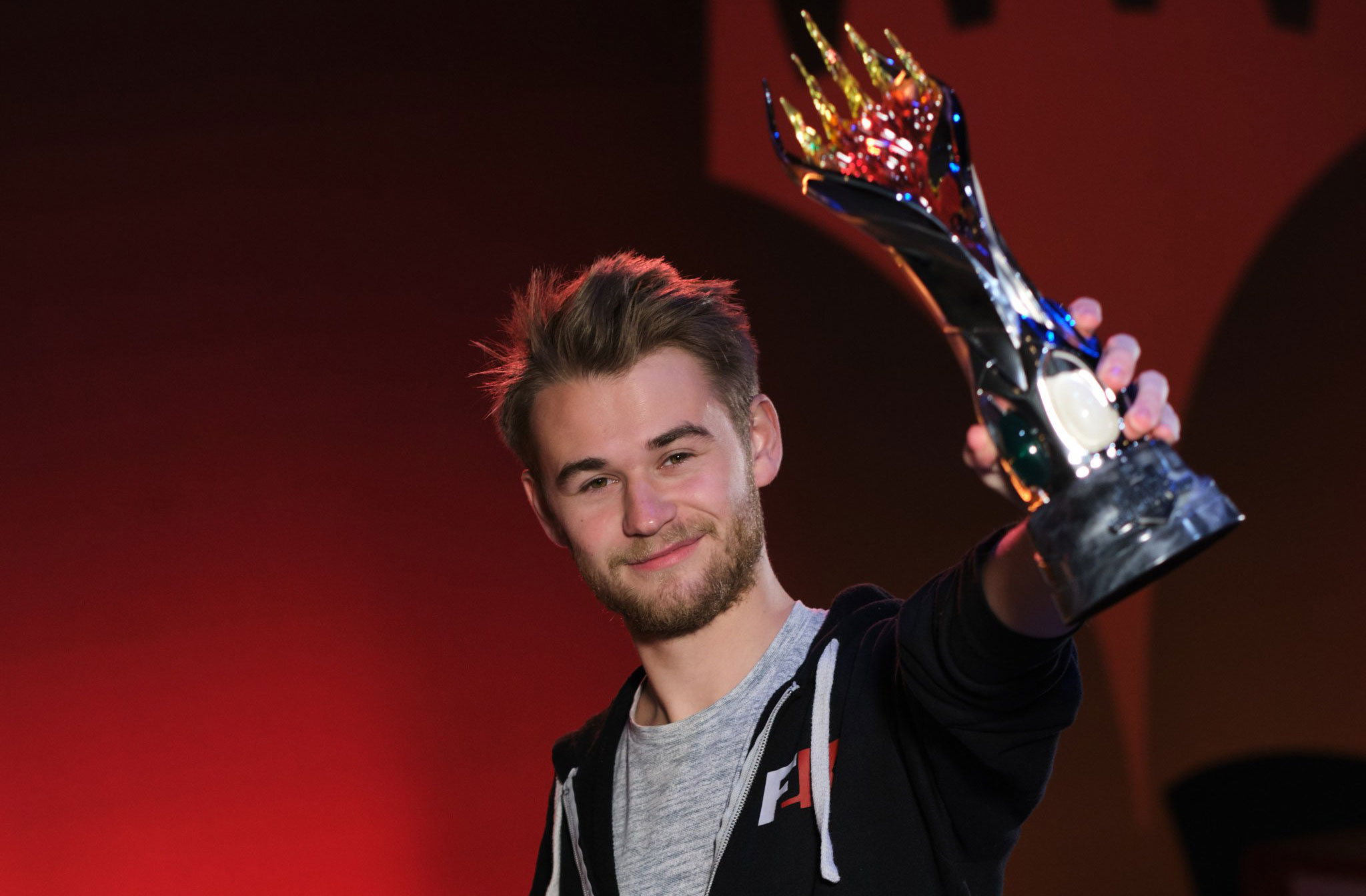
Still, not even an eight-hour delay could damp my spirits as I arrived in Hawaii, which at this point I can say is my favorite place on earth. The way I see it, in most places you have to choose between “familiar” or “exotic” — you can go to a secluded beach in Thailand and have tropical weather, gorgeous views, a relaxing time, but then you’re going to be far from everything, the Wi-Fi on your phone is not going to work, you might not have many options for food, they will speak a language that you are not familiar with; or you can go to a place like New York and have everything at your fingertips while you’re surrounded by buildings.
Hawaii is sort of this weird mix where you get both — it’s still the United States, so everything is familiar, but it’s also an island in the middle of nowhere where you very much get exotic. You’re walking randomly on the streets and all of a sudden there’ll be this huge tree, colorful foliage and flowers, and a pond with enormous koi fish, and this happens constantly. The average block in Hawaii is prettier than the prettiest street in most cities and the food there is excellent to my tastes, as I really like Japanese food but I also really like The Cheesecake Factory.
And shave ice, can’t forget shave ice.
Things weren’t perfect, though, since I still wanted to find a roommate — I didn’t want to be there by myself with Ondrej and his girlfriend all of the time. In the absence of my wife, who couldn’t attend because of work, I found the next-best thing and brought Matt Nass. Thus, our Hawaii squad was complete. We had a good time in Hawaii — we didn’t get to do anything extraordinary, but we were in Hawaii, so the ordinary times were very good.
A couple of days before the tournament we got the decklists. We were surprised at four copies of Jeskai Fires and only one copy of Azorius Control (other than the two of us) — we sort of expected the reverse of that, but it still didn’t feel that bad for us. Of the fourteen other players in the tournament, I felt we only had one bad matchup — Kanister with Jund Sacrifice. Luckily for us, he had no good matchups other than us, so he was swiftly eliminated.
In the end, after some analysis, we liked our spot. Many people were saying we had the best deck in the tournament and it actually felt like we did, despite Crokeyz proclaiming on Twitter that Azorius Control was unplayable and could win no matches.
I will not write about the tournament in much detail, as I’ve already done so extensively, but I managed to get the required wins on Day 1 to get to the upper bracket, which was an enormous advantage due to the tournament structure. After that, you know how things went — I beat Seth, then Marcio, then Marcio again, and then became the World Champion, with the MVP being the sideboard plan of taking out counterspells in Games 2 and 3 for more proactive threats, which is something almost nobody would have done since it’s so unintuitive (as the counterspells are very good in Game 1).
The feeling I had after winning this tournament was honestly surreal — it was something I had wanted for so long and it was finally there. I didn’t really feel like I had anything left to prove, but I had proved it anyway.
Soon after I won, it became clear that being the World Champion was everything I dreamed it would be. It started with a big party to pick me up at the airport:
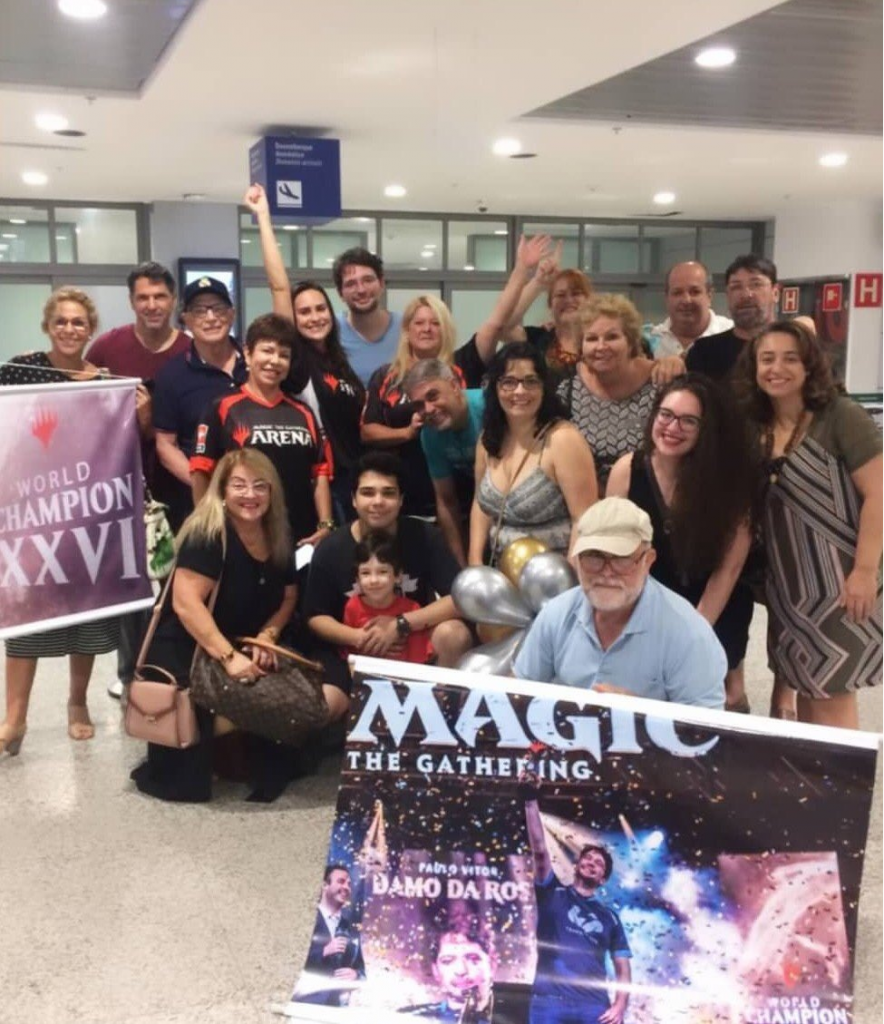
And after that came interviews with big news networks, with many different websites, contact from different companies, proposals for me to attend tournaments, and even a big announcement on the public service all over Brazil of all things.

People that I hadn’t spoken with in ten years contacted me to congratulate me and tell me they heard all about it, and it felt like the first step towards something that I wasn’t sure I would ever have — widespread recognition, rather than just MTG recognition.
Then, the pandemic came, and sort of put an end to all of that. All the tournaments were canceled, many of my interviews were canceled, and COVID-19 dominated all the news. I wasn’t even sure part of my prizes from the tournament would still hold, as who knew if there was going to be a World Championship or an MPL to get to the following year. I still felt thrilled about my accomplishment, of course, and as far as pandemic problems go things could have gone a lot worse, but it still felt like an unfortunate missed opportunity. I had finally done the thing that could get me famous and my chance was over before ever being given a fair shot. Later in the year, I found out that this hadn’t actually been the case.
COVID-19 transformed the landscape of professional Magic entirely, changing my life with it in the process. Some of it was good and some of it was bad. Whereas I used to spend about three months a year away from home, I was now spending zero, and saving on plane tickets and hotels to boot (this part was good). I was also unable to see many of my friends or to test in person, and the bulk of the big tournaments were all canceled or replaced by tournaments that were not nearly as good.
All the tournaments being on Magic Arena was a change that was made easier by the fact that I had just gone through all the Worlds testing, but it was still not trivial. To this day, I don’t feel like I’ve completely mastered the differences between Arena and paper Magic, but at least I don’t have a panic attack from the rope anymore.
Players Tour Online 1
- Format: Standard
- The deck I played: Temur Reclamation
- Result: 10th
- The deck I should have played: Temur Reclamation
Creatures (3)
Lands (28)
Spells (29)

This was a very straightforward tournament — Temur Reclamation was the best deck, everyone knew it was the best deck, and it was still the best deck. This is usually the mark of something that is too good; when everyone knows a deck is going to be the most popular by a lot, everyone tries their hardest to beat it, the deck tunes itself to the fullest to beat the mirror, and it still performs the best, that’s usually when something has to go. I had a reasonably stock-ish list and played about average, so I was happy with my tenth-place finish.
Players Tour Finals
- Format: Standard
- The deck I played: Bant Control
- Result: Last place
- The deck I should have played: Four-Color Reclamation
Creatures (6)
Planeswalkers (8)
Lands (28)
Spells (18)

Creatures (6)
Planeswalkers (3)
Lands (24)
Spells (27)

Since the preparation for the Players Tour Finals was entirely online, we took the opportunity to test with three new players — Oliver Tomajko, Abe Corrigan, and Zachary Kiihne (though Abe had already tested with us for one tournament). I knew who they were, but had only met Oliver in person, when I got stranded at the airport without being able to call an Uber and his mom saved me and took me along to the convention center. They turned out to be great testing partners who both dedicated a lot of time and were communicative, which is a very good combination; some people play a lot and say nothing and you have to pry each piece of information out of them like it’s torture, and some people have loud opinions about everything but did none of the work to get these opinions to begin with, but with the three of them they were a healthy mix of both aspects.
All the preparation led us to having a pretty good deck for the event — a well-tuned version of Four-Color Reclamation (which basically splashed for Teferi, Time Raveler to have a big edge in the mirror) — but I ended up not playing it. Instead, I played Bant Control. This was because I was not comfortable entering the Reclamation arms-race; I felt that the Four-Color version was undeniably better in the pseudo-mirror, but in my mind was also undeniably worse versus most other decks, as the mana issues were very big — there were many ten-turn games in which you simply couldn’t cast Explosion because getting double-red was like a quest all in itself.
I expected most people to play Four-Color Reclamation, which meant that, if I chose to play it, I would make my deck worse versus everything else while still not getting an edge in the mirror (since everyone was doing it anyway). So I chose to play Bant, a deck that I felt was actually better versus Four-Color Midrange as well since you didn’t care that much about Teferi.
My deck wasn’t necessarily bad, but it wasn’t good either, and I ended up missing Day 2 and having my worst result of the year.
Mythic Invitational
- Format: Historic
- The deck I played: Mono-Black God-Pharaoh’s Gift
- Result: 27th
- The deck I should have played: Jund Sacrifice
Creatures (30)
- 2 Massacre Wurm
- 4 Cryptbreaker
- 4 Ravenous Chupacabra
- 4 Stitcher's Supplier
- 4 Priest of Forgotten Gods
- 4 Lazotep Reaver
- 4 Woe Strider
- 4 Fiend Artisan
Lands (24)
Spells (6)

Creatures (25)
- 3 Midnight Reaper
- 4 Priest of Forgotten Gods
- 4 Dreadhorde Butcher
- 4 Mayhem Devil
- 1 Lovestruck Beast
- 4 Cauldron Familiar
- 1 Bonecrusher Giant
- 4 Woe Strider
Lands (23)
Spells (12)

The Mythic Invitational was my first real foray into testing Historic. I had played the format for an Arena Open but hadn’t really cared about it at that point. For this tournament, I tested quite a bit as I wanted to qualify for the Season Grand Finals.
This tournament was a tale of the “deck to beat” being actually really easy to beat and getting murdered in the tournament. Going into it, Goblins was on everyone’s minds, everyone set out to beat it, and everyone managed to do it, be it with Mayhem Devil, Witch’s Vengeance, Aether Gust, Massacre Wurm, or a combination of several of those. The deck was crushing Arena yet performed extremely poorly at the Mythic Invitational. As a counterpart, we had the rise of Jund Sacrifice, which was to me the clear best deck to have played in that event, putting four people in the Top 8.
For me personally, it was a tale of running into a soul-crushing Arena bug. On the very first game of the tournament, I ran into the issue where the game simply passed my turn even though I had actions to take — I could sacrifice a creature to Phyrexian Tower to use Gate of the Afterlife and instead my turn just ended, turning a likely win into an assured loss. We were aware this bug existed and tried to play around it but it’s the kind of thing that’s very hard to catch — you’re not going to play the entire game under full-control because that’s just not feasible, but it’s not trivial to figure out when exactly the program is going to pass your turn out of the blue. Most of the time, when you realize it, it’s too late and your turn has already ended; there’s no warning.
At the time this happened, many people said that it was my own fault for not using full control to play around it. While I acknowledge that I did not take every step I could to prevent this, it still feels a bit like victim-blaming to me. Obviously I could have done more, but I shouldn’t have to — the program should simply not pass my turn when I have clear actions to take. This was acknowledged by Wizards of the Coast (WotC) as a bug, rather than intended behavior, and it has since been fixed.
Anyway, I did this the very first round of the tournament, and it destabilized me. Then, on Day 2, I did this exact same thing again and it again left me on life tilt. You see, I have a relationship with tilt in Magic that I’ve come to find out is not exactly the same as most people. Most people told me that they tilt when they lose because they make a mistake. They get angry at themselves for messing up and then spiral into messing up even more. On the other hand, if they lose because of something external — such as mulliganing to four, not drawing enough lands, or a program bug — then they don’t get tilted because they know it wasn’t their fault and stressing over it will get them nowhere.
For me, it’s the opposite. When I lose because I make a mistake, I accept it as the natural course of things; if I make a mistake, I’m supposed to lose. Losing to a mistake of my own is actually encouraging in some ways, because it tells me that, if I try harder and practice more I will see improvement. I made a mistake and lost because of it, so next time I will be better and I will not lose. Losing to an external factor, on the other hand, often tilts me because it brings up the futility of what I am doing — sort of “Why am I even practicing if I’m going to mulligan to four anyway?”.
I’m not claiming this is the right approach to things, or even necessarily a rational approach —- obviously the ideal scenario is not to tilt at all because that never accomplishes anything. However, unlike robots like Allen Wu and Ben Stark, I actually have emotions that I have to deal with and sometimes it’s hard for me like for everyone else. This was one of those cases. I lost a match in an important tournament to an issue that I felt was external and (mostly) not my fault and that should not have happened if only someone else had done their job better, so as a result I got mega-tilted and played worse for the remainder of the day. Then, after I finally recovered on Day 2, it happened again and then I got uber-mega-tilted.
2020 Season Grand Finals
Since I did not do well in either of the tournaments that mattered for this, I was relegated to watching the Season Grand Finals from the sidelines. This was a weird experience because, to me, being a professional Magic player means I get to play in all the high-level events — something which I’ve done for many years in a row now — and now all of a sudden there was this very important tournament that I was just not a part of.
It wasn’t all bad, though, as I got asked by WotC to do commentary of the event! I really enjoy doing commentary and it’s something I’ve been wanting to do more of for years, so I jumped on the opportunity when it presented itself. We were four experts for a relatively small tournament, so I only got to do three rounds, but it was still a lot of fun and I’d love to do it again.
As for the actual tournament, Omnath, Locus of Creation definitely stole the show, as the best deck in both formats revolved around the card and it was swiftly banned after that. This really was a case of “the new card is busted so let’s maximize it as much as we can” and people who didn’t play it in either format must have felt like they were missing out.
The most interesting deck to come out of this tournament was Seth Manfield’s Dimir Rogues list. It was very raw and untuned (and honestly kinda bad) but it was the kickstarter for the more “mill-oriented” version of the deck, as opposed to the “Rogues-oriented” version that people had before. Before this tournament, most Dimir Rogues lists were very creature-centric and had a lot of Rogues such as Zareth San, the Trickster, and Seth’s list popularized the Lurrus of the Dream-Den lists that we see this day (and that are, in my opinion, better).
Creatures (12)
Lands (21)
Spells (27)

The second most interesting deck was Emma Handy’s and Autumn Burchett’s Gruul Adventures list. Like Seth’s deck, I don’t think it was very good for that tournament, given that Omnath was just busted and Gruul Adventures didn’t play it, but it was a different build of the deck that planted the seed for what would end up becoming the deck to beat later on. The highlight of their build, to me, was the incorporation of just a small Adventures package — I had seen versions with a big Adventure focus and a version with no Edgewall Innkeeper at all, but Autumn and Emma showed that you didn’t actually need to go all-in for this card to be good and I think that was a big breakthrough in Gruul lists.
October Zendikar Rising League Weekend
- Format: Standard
- The deck I played: Rakdos Midrange
- Result: 9-3
- The deck I should have played: Gruul Adventures
Creatures (22)
- 2 Rankle, Master of Pranks
- 2 Murderous Rider
- 4 Robber of the Rich
- 4 Bonecrusher Giant
- 2 Ox of Agonas
- 4 Mire Triton
- 4 Kroxa, Titan of Death's Hunger
Planeswalkers (2)
Lands (19)
Spells (17)

Creatures (25)
- 3 Scavenging Ooze
- 4 Lovestruck Beast
- 2 Questing Beast
- 4 Edgewall Innkeeper
- 4 Bonecrusher Giant
- 4 Brushfire Elemental
- 4 Kazandu Mammoth
Lands (22)
Spells (13)

Towards the end of the year, the first weekend of MPL League Play started. In terms of preparation, League Play was more similar to a small tournament like Worlds than it was to a big tournament because everyone was good. Sometimes, when playing a bigger tournament like a GP, we need to consider the fact that not every opponent will be as experienced as we are, so it becomes more interesting to play decks that can leverage this skill gap — if the match is incredibly straightforward, there aren’t many spots where you can get more mileage out of being a more experienced player.
When every opponent is good, however, this is not a big factor in deck selection. As an example, we have that year where Reid Duke played Selesnya Hexproof at Worlds; since the field was small and experienced, it’s okay to play a deck that doesn’t leverage a skill gap because the skill gap, if it exists, is very small. I believe that, in a GP, Reid would have played something like Jund instead (unless of course the more straightforward deck is much better, in which case you’ll play it regardless).
For this tournament specifically, the “deck to beat” was Azorius Blink (Yorion) — it was all over the internet. For this reason, we thought most of the MPL players were going to play Dimir Rogues as a deck that was good and naturally preyed on it. Rakdos Midrange was the deck we found that had the best matchup versus Dimir Rogues, so it was what I decided to play.
I thought this was an inferior deck but a better metagame call, which was something I could only do because the field was small and predictable. I was originally very scared of it, specifically because I didn’t think it was that good a deck overall, but my teammates seemed convinced it was a good choice, and eventually I talked to Willy Edel, who had also been playing the deck, and he convinced me (plus he suggested a couple of changes that I felt made the deck better).
My teammates who were in the Rivals League expected more Dimir Rogues than normal, but not as much as in the MPL — the Rivals field was harder for us to predict, as it was twice as many people, many of whom we didn’t actually know. In the end, Dimir Rogues ended up being the most-played deck in both Leagues, so our read was very good.
At the very first round of the tournament, I played versus Rei Sato on Gruul Adventures. At that point, Gruul Adventures was not a very popular deck, and Rei’s version had a very different sideboard. He beat me in two relatively quick games, and at the end of it all he was in solid first place with an 11-1 record.
Sato’s finish changed the landscape of Zendikar Rising Standard because it turned out that his sideboard was actually just incredible. I originally felt favored with both Rakdos Midrange and Dimir Rogues against Gruul Adventures, but Sato’s plan of slowing down with removal spells; Vivien, Monsters’ Advocate; and Ox of Agonas changed how these matchups played out, with Vivien being the key card in both matchups.
As for myself, I had a very successful tournament, going 9-3 and finding myself in second place (with a couple of 8-4s behind me). I played versus more Azorius Blink than Dimir Rogues, but due to a combination of fortunate draws and Azorius Blink just not being a very good deck, I managed to beat most of them.
November Zendikar Rising League Weekend
- Format: Standard
- The deck I played: Dimir Rogues
- Result: 6-5
- The deck I should have played: Dimir Rogues, I think?
Creatures (14)
Lands (23)
Spells (23)

For the second weekend of the MPL, Gruul Adventures became the deck to beat, which meant playing Rakdos Midrange was out of consideration — Rei Sato’s sideboard plan was simply too hard to beat. This week, I struggled with what to play a little bit more, and part of that was because I knew exactly which eleven players I was going to play against and had a good idea what they were going to play.
Before the tournament, I predicted five to six copies of Gruul Adventures, two to three copies of Esper Doom Foretold (Yorion), and three to four copies of Dimir Rogues. My opponents were six Gruul decks, two Esper Doom Foretold (Yorion) decks, and three Dimir Rogues decks. So I absolutely nailed the metagame I was going to face, but in spite of that, I didn’t really know what to play, which is quite unusual; most of the time, if you tell me literally what my opponents will be every round, I will be able to do better than slightly above 50%.
The main issue with this format was that Gruul Adventures, unlike Mono-Red Goblins or Dimir Rogues, is not a very beatable “deck to beat.” You can tune your deck to beat Gruul Adventures and be favored versus it, but you’ll never crush it — it’s a powerful aggressive deck with artifacts that can win the game on their own and enough staying power that simply killing every creature early on is not going to win you the game every time. That, and, regardless of what you do, sometimes they will be on the play and have a good draw and you’ll lose.
If this was the case, then why did I not play Gruul Adventures myself? Mostly because of the mirrors. I couldn’t find a way to get a good edge in the mirrors and getting small edges there included playing cards that were hideous everywhere else, such as The Akroan War. I felt like the tournament had already self-selected to remove all decks that flat-out lost to Gruul Adventures, so by playing it myself I would end up with a bunch of 50-50 matchups (either mirrors or not), at which point I’d rather play Dimir Rogues and accomplish the exact same thing.
Zendikar Rising Championship
- Formats: Standard and Historic
- The decks I played: Jund Company (Jegantha) and Dimir Rogues (Lurrus)
- Result: 9th place
- The decks I should have played: Jund Company (Jegantha) and Dimir Rogues (Lurrus)
Creatures (25)
- 2 Scrapheap Scrounger
- 3 Midnight Reaper
- 4 Priest of Forgotten Gods
- 4 Dreadhorde Butcher
- 4 Mayhem Devil
- 4 Cauldron Familiar
- 4 Woe Strider
Lands (23)
Spells (12)

Creatures (15)
Lands (17)
Spells (28)

I had already tested extensively for Standard because of MPL League play and, while I didn’t have a deck I loved, it seemed like Dimir Rogues was going to be good enough — Mono-Green Food and Temur Adventures (Obosh) were both on the rise, which made Dimir Rogues better than before, and Gruul Adventures players were being forced to remove some of the anti-Dimir Rogues sideboard cards. I did change my list a little, as I thought Lurrus of the Dream-Den and Ruin Crab were too important versus the new popular decks, so I had to cut Zareth San, the Trickster.
Because of this, I focused most of my testing in Historic. Very early on, I realized I was going to play one of two decks, Four-Color Midrange or Jund Company, since both seemed simply better than the rest of the field. Ultimately, I didn’t feel comfortable with the Four-Color Midrange deck because I wasn’t confident in my metagame predictions; that’s a deck that can be built in any way you like, so there’s a lot of room for error, whereas Jund Company mostly does its own thing.
In the end I finished ninth and I thought my decks were both good — I went 6-1 in Historic and 5-3 in Standard, but I think it’s hard to have a deck that’s better than 5-3 in our current Standard format.
Two days after the tournament, I was supposed to fly to São Paulo to receive the esports award for Best Card Game Player of Brazil for 2020. This is an award called Premio eSports Brasil which has the backing of very big national TV channels and they have a lot of different categories for different types of games, streamers, commentators, etc. I had been a contender for this award before but I had never won it, but this time I knew I was going to win because COVID-19 meant they were only taking the winners to the ceremony, rather than all the finalists.
I struggled a bit as to whether I should go or not, but it felt important enough that I should do it. Plus, I knew they were taking as many precautions as they could — for example, they set up a laboratory in the TV studio so that we could all get immediately tested as soon as we got there, there was ample space between one person and another, and so on.
So, I went to the ceremony until I was eventually called to receive the Best Card Game Player award. I went up there, got the award, did a little speech that I had semi-prepared and went for my interview, but they told me it was a bit packed so I’d be sent downstairs again and called up for an interview when things freed up (because of, you know, COVID).
I waited for a while, they gave out all the awards, and I was called upstairs again for my interview — or so I thought. Once I was upstairs, they told me to get ready to go in because I was getting the award for Best Esports Player of the Year, an award that I didn’t even know I was a contender for. Here’s an actual photo of me when they pushed me on stage to get it:

I was honestly just speechless, and not only because I had already “wasted” all my words on my previous speech — had I known I was getting another award, I’d have saved the best bits for this one! Getting this award was honestly amazing on so many levels, in big part because I thought the esports community kinda “suffered” MTG rather than embracing it. I expected to get the award for Best Card Game Player — I did win Worlds, after all — but never in a million years did I expect to beat out every CS player, every League of Legends player, every Fortnite and Freefire and fighting game and virtual soccer player in the entire country. Brazil has a big esports culture and some people here are very famous, so the fact that I won this award as a Magic player speaks volumes to how much is changing for both myself and the game.
In the end, this is the power of a World Championship title. This is why I coveted it so much for so many years, and this is what I thought the pandemic might have robbed me of, but it turns out that it actually didn’t. A couple of years ago, when I won Pro Tour Kyoto and the title of Player of the Year, I did not even make it to the finalists of the card game category. I was arguably the best player in the world in my game and I didn’t make the Top 3 in Brazil — that’s how little this community embraced Magic. This time, I won not only the card games award but also the entire thing! It was the recognition that I had always wanted and at this point didn’t think I was ever going to get.
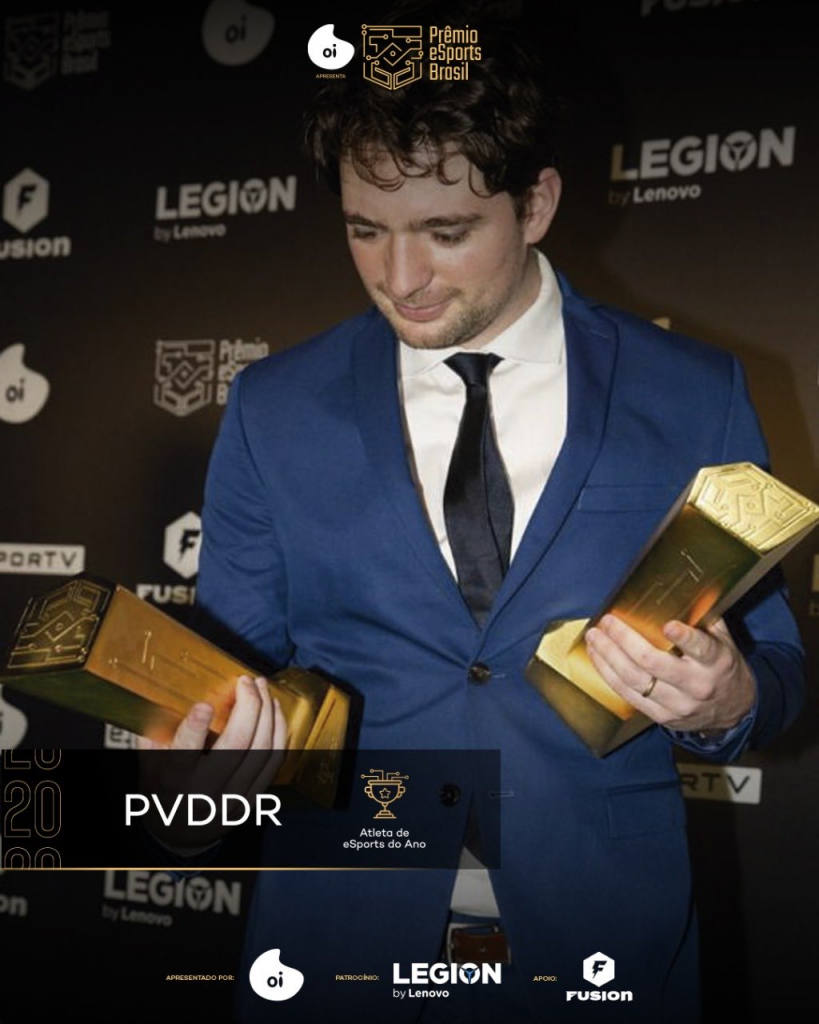
So, we get back to the present, where I’m taking a small break from tournament Magic before getting back to things for the second weekend of the MPL Split. The goal, as always, is to stay in the MPL (I’m already qualified for Worlds), and to guarantee that I need to finish the season in the Top 4. Currently things are looking up, as I’m in first place, but the margins are very thin and we’re less than one-third of the way in, so there’s still a lot to be done and I know I can’t slack off about it.
Thanks for reading all of this! I hope it was enjoyable and that you were able to get a grasp of who I am as a person rather than just as a Magic player. Happy holidays to those who celebrate them!

